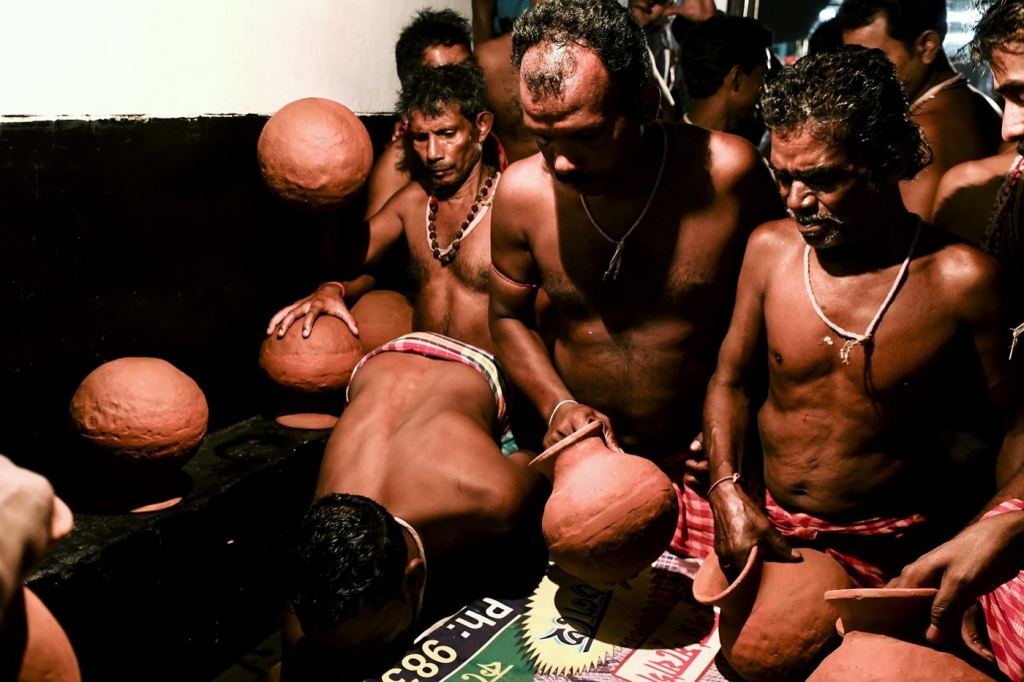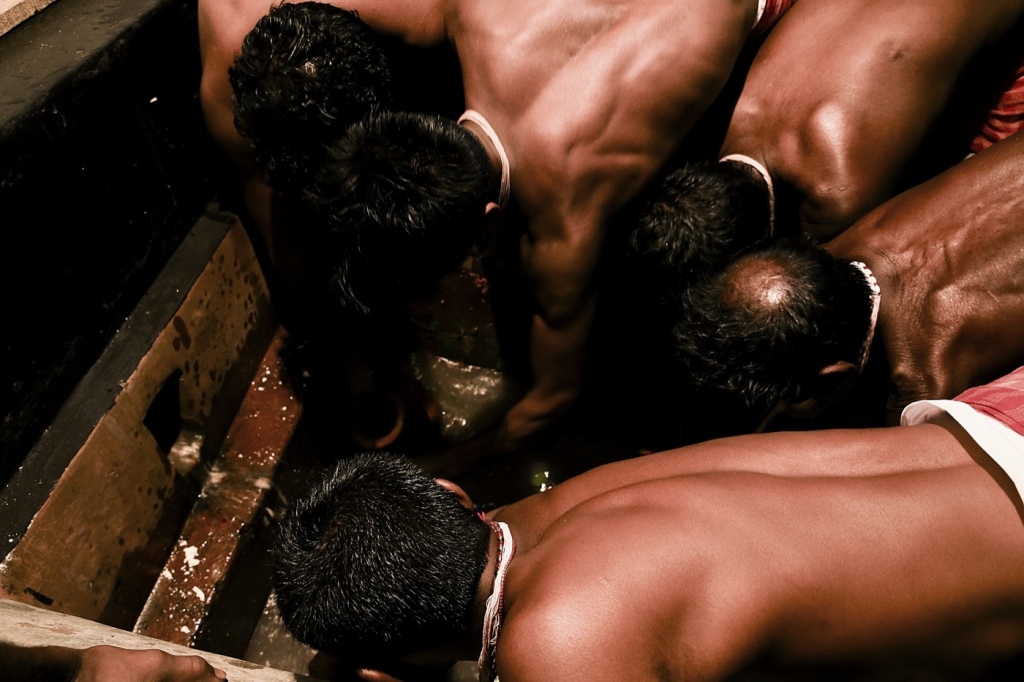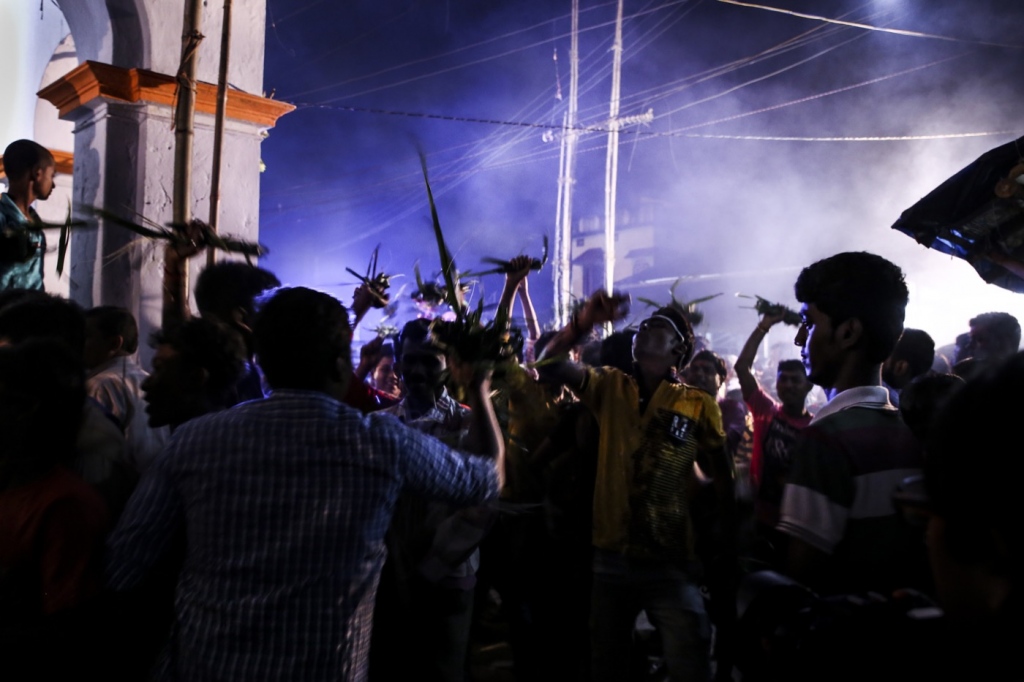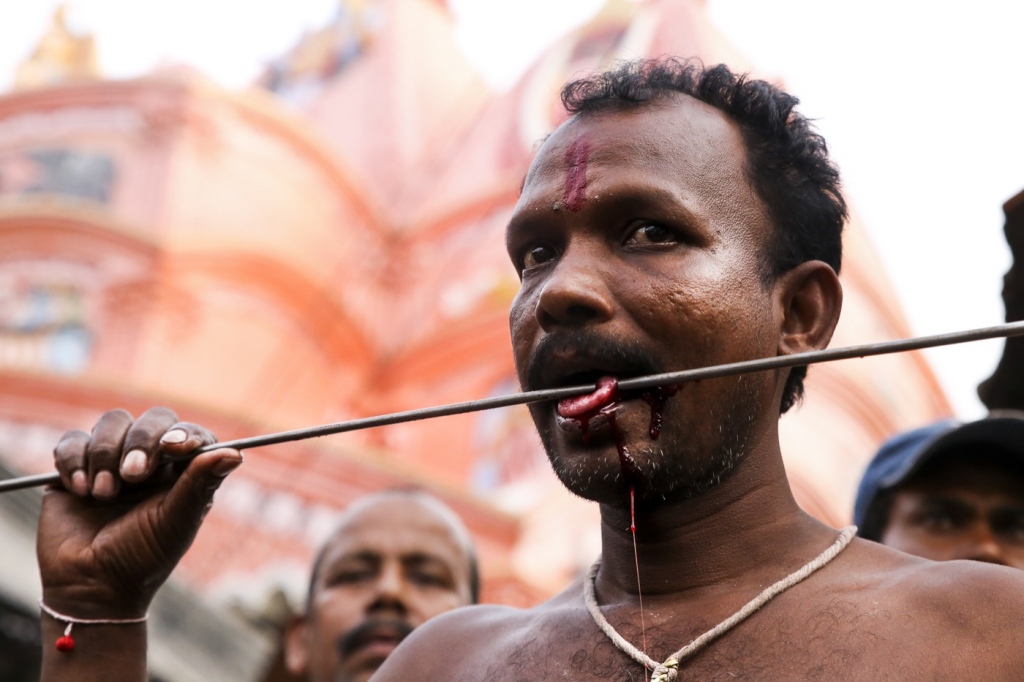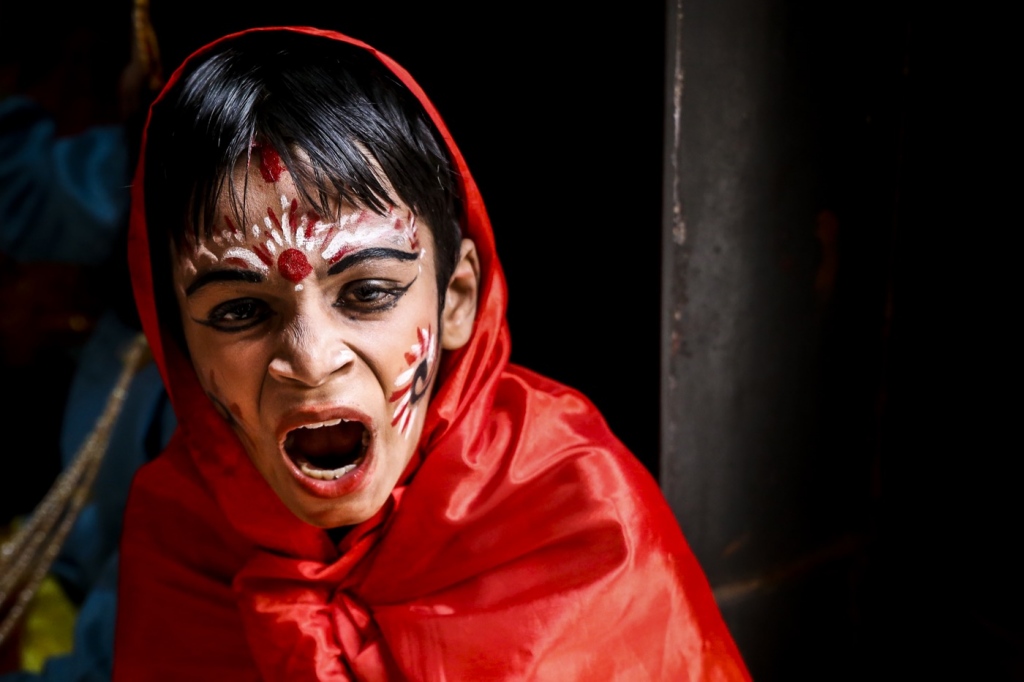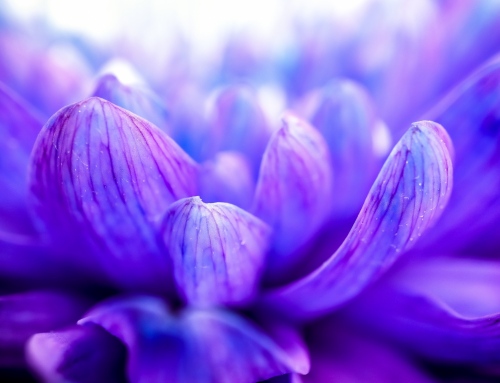Gajan is a religious festival predominantly celebrated in the rural areas of the state of West Bengal, India and the neighboring country of Bangladesh by Hindus.
The festivities are generally observed in mid April on the final week of the Bengali calendar year. The rites involving Gajan has evolved over centuries and presently involves worship of Shiva along with ritualistic body piercings, self-flagellation and fire stunts.
The word “Gajan” is etymologically derived from the bengali word “garjan” meaning roar or cry which the worshippers emit in a bid to appease the gods and celebrate the pain which still forms an integral aspect of the rituals. The worshippers are commonly referred to as sanyasis or bhaktas. The festival ends with charaka puja, a form of worship aimed at evoking blessings of the gods for prosperity and harvest.
‘Sanyasis’ pierce themselves with skewers and march across villages accompanied by drummers and followed by the locals in huge numbers.
Rituals vary from place to place including one popular method in which men hang from ropes and are spun high above the ground from tall tree trunks converted to poles. In other places obscure tantrik methods predominate, wherein devotees march on through villages with skulls and bones. Fire stunts remain a widely observed routine.
Ever popular among rural communities, this festival still draws huge crowds and continue to remain a spectacle.
After the worship of Shiva, devotees gather to collect ‘charanamrit’ or holy water which has supposedly been used to wash the idol’s feet.
Considered the ultimate form of the lord’s blessing.
Of course a mandatory selfie
The rituals mandate marriage of Shiva with Leelavati. The devotees go berserk amidst drum beats as the grooms companions.
The marriage rituals… outsiders are never permitted inside.
Shiva has been married off to Leelavati. Now the customs state that the groom, the almighty Shiva graciously blesses a dead man and brings him to life. Devotees celebrate Shiva’ s ability to bring one back from the dead.
Dawn. Crowd swells. The most eagerly awaited part begins. The tongue piercings. Celebration of pain. It is said men pierce themselves to feels the pain of womenhood, of childbirth.
Amidst body piercings and voluntary infliction of pain through self flagellation, another integral part of the festival remains the dressing up of men and women as popular deities and performing impromptu skits. The intensity of the piercings are countered by the light hearted comical performances by these characters commonly referred to as “shong” meaning jesters.
PROBLEMS WITH FESTIVALS
Photographing a festival that is observed predominantly at night can be tricky, even difficult. One might get trapped in corners or get jostled around by unruly crowds preventing proper vantage positioning or time to shoot critical moments.
Uneven lighting or even the lack of adequate ambient light further complicates matters. camera settings need to be frequently checked to ensure proper exposure settings at all times.
SHOOTING MODES AND ISO FOR LOW AMBIENT LIGHT
Many prefer to shoot in Aperture Priority mode in such situations. I though always prefer full manual controls.
Low light situations are what you mostly end up with. Even apparently bright fluorescent lights in open spaces have huge fall-offs and do not contribute to ambient light in a manner you would expect.
High ISO settings are almost always a must. Modern full frame sensors usually do a more than decent job of handling ISO settings above 2000. I almost always maintain a basic setting of ISO 3200 in such situations and at times climb up to above 6000.
In camera noise reduction helps but tends to differ among manufacturers.
SHOOT RAW
Its advisable to shoot RAW. The speed at which things can happen in festivals, fairs and similar celebrations might not always allow one to set perfect exposure settings.
Post processing, at times even heavy, is generally required. Modern softwares help a lot with contrast and noise adjustments while retaining clarity and augmenting sharpness.
PRIOR SURVEY AND PLANNING, LEARN ABOUT THE EVENT
The scope of a recce of the scene, if possible, cannot be overstressed. Crowds tend to move in throngs, in phases, so high ground if available is almost always an advantage. Crowd movements when combined with slow shutter speeds can make for dramatic and creative styles.
Its best to collect as much information as possible about the rituals, customs, local sensibilities, off-limits areas, places to avoid, places to be in, situations to follow, a bit of local history etc.
GEAR AND SETTINGS
When I need to cover a festival that’s chaotic, disorganized and draws voluminous unruly crowds and that too at night, I usually prefer a full frame sensor noted for good ISO handling abilities and a fast mid-zoom lens.
Mostly it’s a Canon 6D which allows really smooth high ISO handling, enabling faster shutter speeds and I usually pair it with a Tamron or Canon 24-70mm, f2.8 lens. Tamron even puts in an image stabilization in its 24-70.
The entire sequence was shot after midnight. ISO settings have mostly stayed above 3200.
I don’t prefer too shallow DOFs for street and documentaries because in my opinion that messes up the eyewitness feel of the photographs. I am almost always shooting at f8 or higher during daytime and at night I try not to come down below 6.5 unless I am looking for extreme subject isolation



